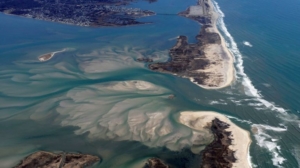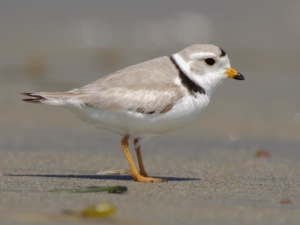
It’s been nearly seven years since Superstorm Sandy slammed into Long Island Sound and we are still learning about effects from the storm. We know the catastrophic impact on buildings (including our own Coastal Education Center), bridges, roads, and the like. Infrastructure took a big hit, with many areas out of power and access for weeks.
But just as a raging wildfire can create new habitat and new growth amid destruction, so can the tumult of a hurricane. Sandy moved sand and dunes across the region – creating new dunes and beaches with it – habitat for the tiny Piping Plover. The Piping Plover is a bird that nests right on the beach and, as our waterfront has become valuable and privatized, there has been less available beach habitat. Then Sandy came and reset the beaches. Beaches are dynamic ecosystems, which means that, in a natural state, they will move and re-form on a regular basis. We humans prefer our beaches to stay put and with walls and houses we have confined beaches so they mostly cannot move. Until a major storm takes over, and the beach cycle begins anew.
This is what happened on Fire Island, a barrier beach off of Long Island. In a study published last month in Ecosphere (and cited in the New York Times), scientists discovered that one effect of Sandy and the restoration efforts of the Army Corps of Engineers, was to create new stretches of sand (50% more beach habitat), leading to a whopping 93% increase in abundance of the threatened birds.
Destructive hurricanes are related to climate change since hurricane power increases with higher sea surface temperatures. As climate warms and water temperatures increase, we can expect greater frequency of high impact storms. As humans work to develop plans for greater coastal resiliency, it is helpful to see the larger picture, where new life takes hold in the aftermath of destruction.




